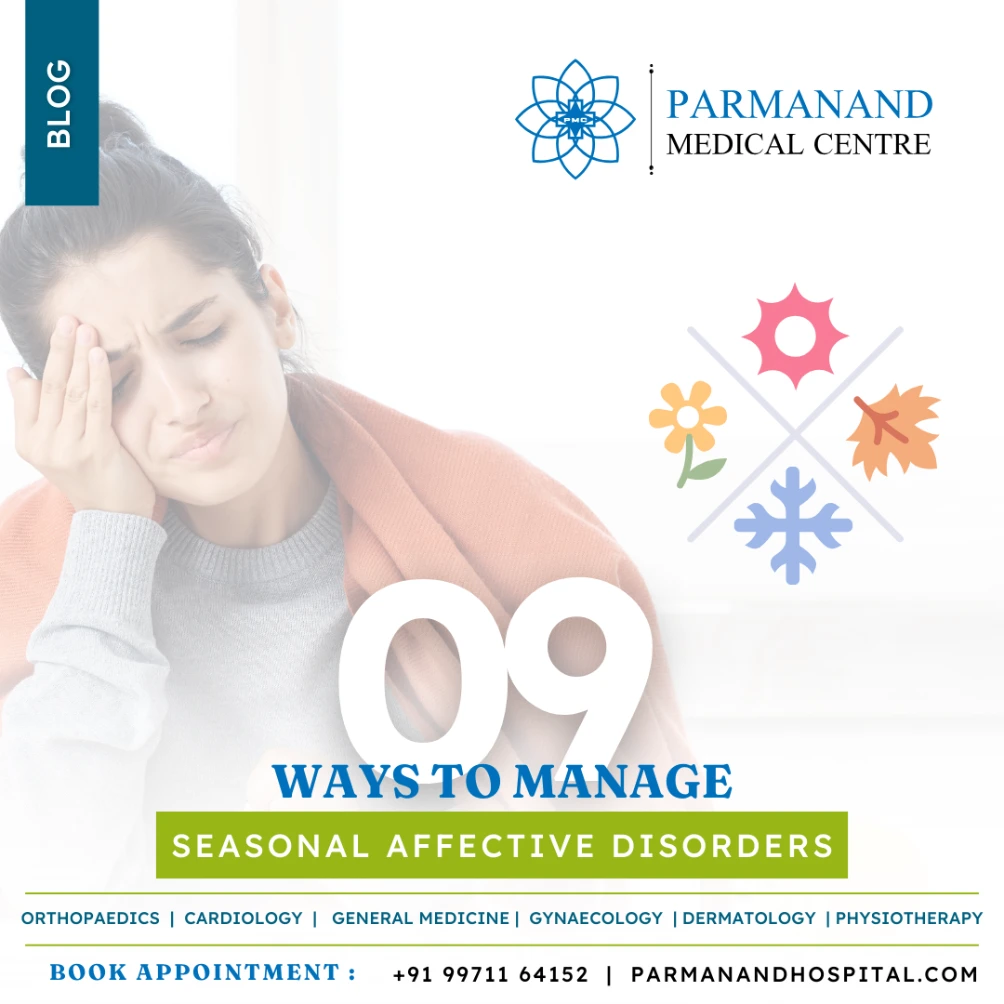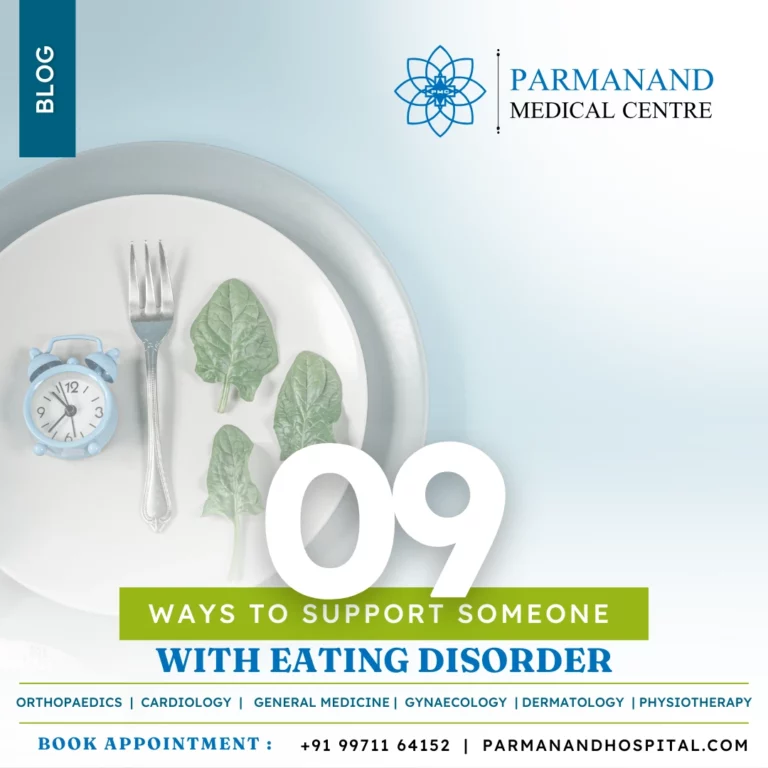While some people might welcome the arrival of winter and monsoon seasons, others may fret over the constant clouds, frequent rain, and shorter periods of sunlight that accompany these times of the year. So, we will learn ways to manage seasonal affective disorders in the given article. Seasonal affective disorder (SAD), a form of depression that recurs during specific seasons, often emerges in these darker periods. SAD can profoundly impact mood, appetite, sleep, and energy levels due to the reduced daylight hours that shift the circadian rhythm. Understanding and managing SAD is essential for those affected to maintain their mental health throughout the year.

What is Seasonal Affective Disorder?
Most people are familiar with clinical depression, or major depressive disorder, which the American Psychiatric Association describes as a common and serious medical condition affecting thoughts, feelings, and actions. While SAD shares many symptoms with clinical depression, it differs in its seasonal pattern. Typically, SAD emerges during fall and winter, when shorter daylight hours disrupt the circadian rhythm. The National Institutes of Health highlights the role of melatonin, a hormone produced at night, in influencing sleep patterns. Serotonin, another hormone that affects mood, appetite, and sleep, often has lower levels in individuals with depression, contributing to the symptoms of SAD.

Symptoms of Seasonal Affective Disorder
Diagnosing SAD for the first time can be challenging because its symptoms are similar to those of clinical depression. Common symptoms include persistent sadness, feelings of hopelessness, difficulty focusing, irritability, low energy levels, difficulty sleeping, overeating, cravings for carbohydrates, weight gain, loss of interest in hobbies and activities, and thoughts of self-harm. However, SAD is characterized by these symptoms appearing at the same time each year and improving when the seasons change. If these feelings subside with the arrival of spring or summer, it may indicate SAD, prompting doctors to recommend preventative or treatment measures for the upcoming season.
Ways to manage Seasonal Affective Disorders
Managing SAD is possible with a combination of medical treatment and lifestyle changes. Here are some ways to manage seasonal affective disorders.
Ways to manage seasonal affective disorders #1 Talk to Your Doctor:
If you experience symptoms of SAD, consult with your doctor. They can provide a diagnosis and recommend treatments such as light therapy, psychotherapy, cognitive behavioral therapy, counseling, or medication.

Ways to manage seasonal affective disorders #2 Get Regular Exercise:
Regular physical activity releases endorphins, which can improve mood and energy levels while relieving stress and anxiety, common SAD symptoms.
Ways to manage seasonal affective disorders #3 Try Light Therapy:
Using a light box that filters out ultraviolet light can help counteract the effects of reduced natural light. This therapy slows melatonin production and increases serotonin levels, improving mood.
Ways to manage seasonal affective disorders #4 Socialize:
Engage with friends, exercise with a partner, or join a class. Social interactions foster a sense of belonging and reduce feelings of isolation.

Ways to manage seasonal affective disorders #5 Travel:
Plan a vacation to a sunny destination. Even a short trip can significantly lift your mood. The anticipation of a getaway can also serve as a positive distraction.

Ways to manage seasonal affective disorders #6 Eat a Balanced Diet:
Consuming a nutritious diet rich in fiber, healthy fats, and complex carbohydrates provides the energy needed to stay active and avoid the mood swings associated with poor nutrition. Avoid drugs and alcohol.
Ways to manage seasonal affective disorders #7 Get Plenty of Sleep:
Establish a regular sleep routine by going to bed and waking up at the same time each day. Quality sleep is crucial for overall well-being and helps the body rejuvenate.

Ways to manage seasonal affective disorders #8 Manage Stress Levels:
Practice relaxation techniques such as yoga, deep-breathing exercises, or engaging in a calming hobby. Aromatherapy and massage can also help reduce stress.
Ways to manage seasonal affective disorders #9 Communicate:
Share your feelings with family and friends to ensure you have the support needed to manage SAD.
Conclusion
SAD can seem difficult to manage, but it is a treatable condition. By understanding the causes and symptoms and taking proactive steps to address them, you can mitigate the impact of seasonal affective disorder on your life. Regular exercise, light therapy, socialization, travel, a balanced diet, adequate sleep, stress management, and open communication are all effective strategies to help you maintain your mental health. With these approaches, you can live a fulfilling life regardless of the season, ensuring that the darker times of the year don’t overshadow your well-being.
Parmanand Medical Centre, under the guidance of Dr. Shekhar Shrivastav – HOD Orthopedics of Sant Parmanand Hospital (Civil Lines, Delhi) specializes in Orthopedics and also offers its service in the departments of Cardiology, Gynecology, General Medicine, Dermatology, Physiotherapy & Diagnostic Tests.
We believe that everyone should have a moment and moderate access to the best health specialists, in their locality. At Parmanand Medical Centre, Yamuna Vihar, this is the conviction that brings us all together and our objective is becoming substantially more and more vital due to the huge and developing issue of the absence of access to reasonable medicinal services.
If you have any inquiries regarding our physicians or services, please don’t hesitate to reach out to Parmanand Medical Centre. You can contact us by calling (+91) 997-116-4152 or by sending an email to contact@parmanandmedicalcentre.com. Additionally, you can click here to access our location on the map or request an appointment. We extend our best wishes to you and your family for a healthy and joyful time.
Connect with us on social media platforms for valuable health tips and general medical knowledge. Follow us on Instagram @parmanandhospital, like our page on Facebook @parmanandhospital, and join us on LinkedIn @parmanandhospital. Stay informed and inspired for a healthier life.



